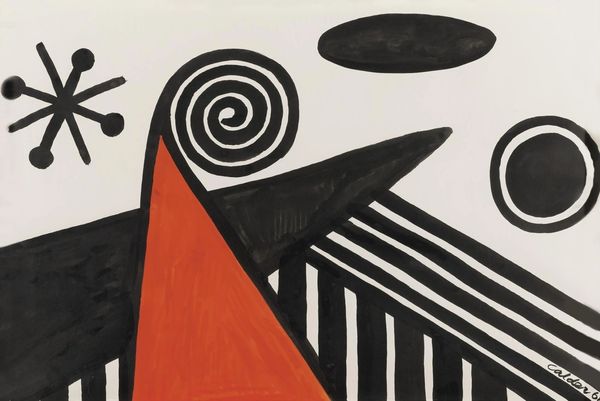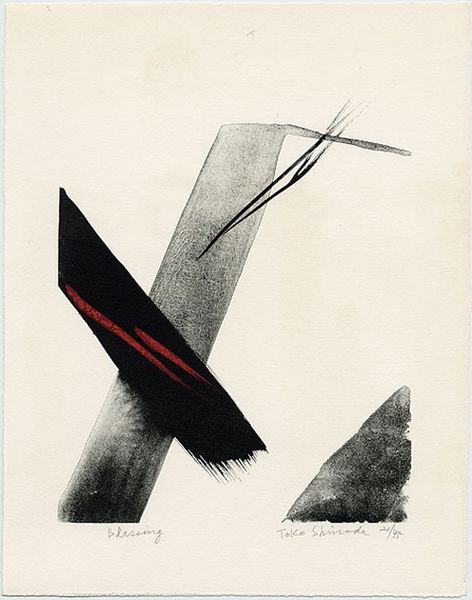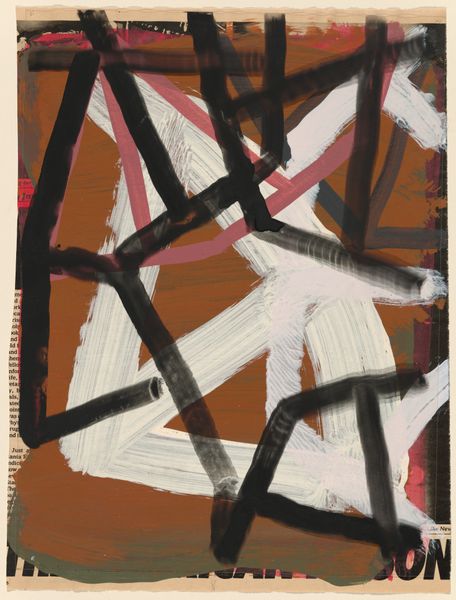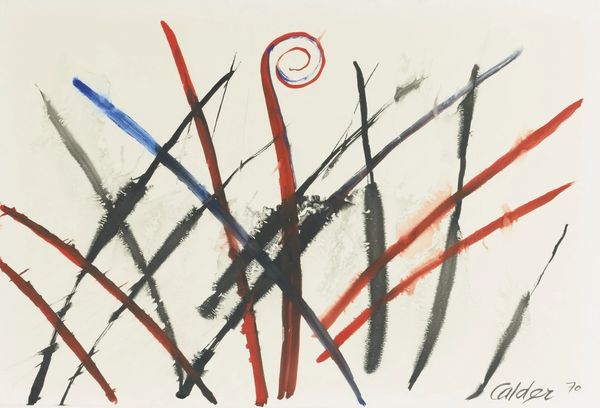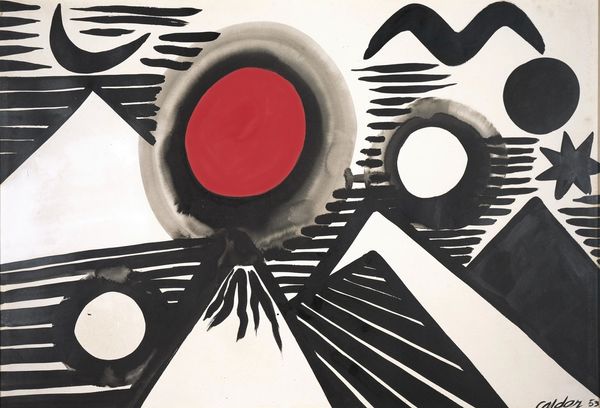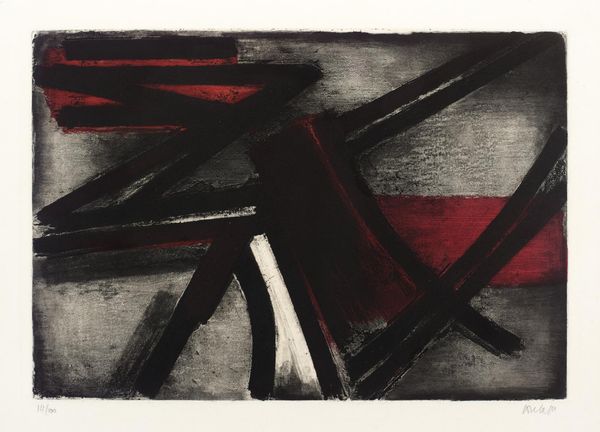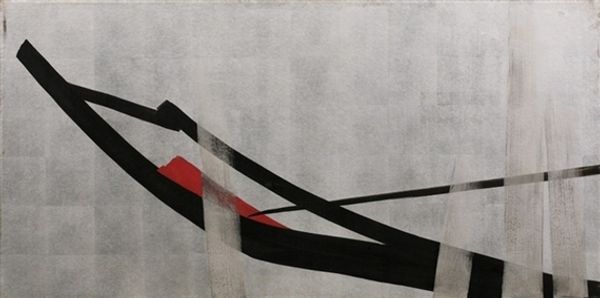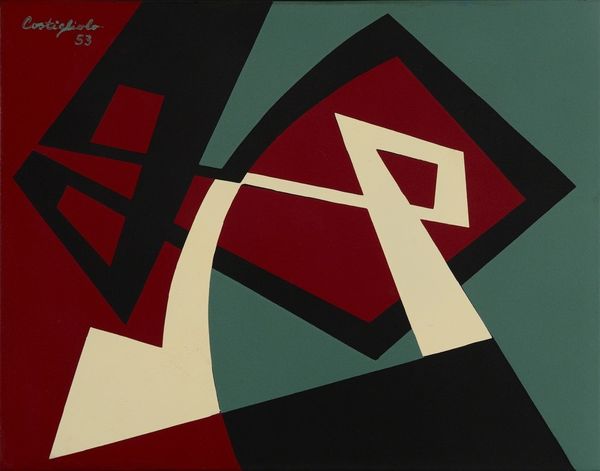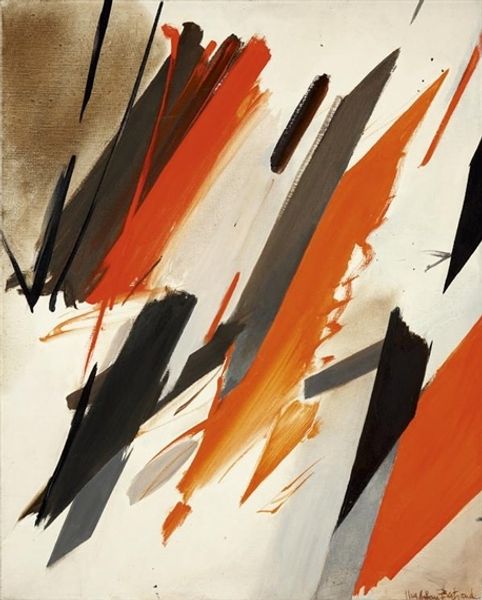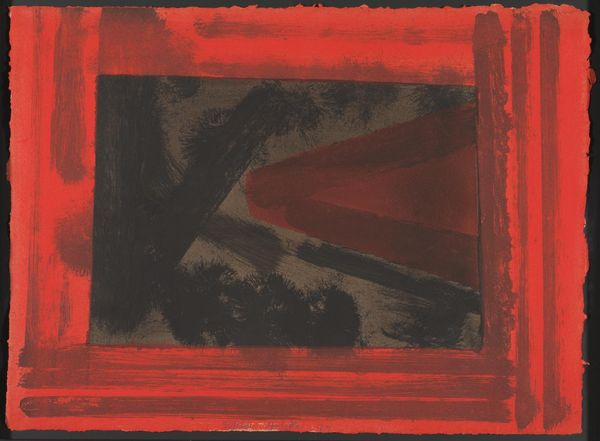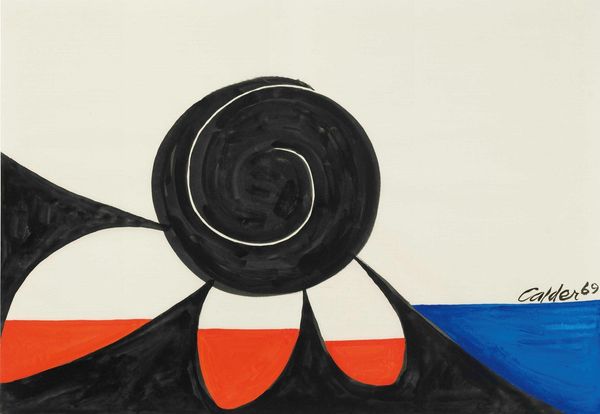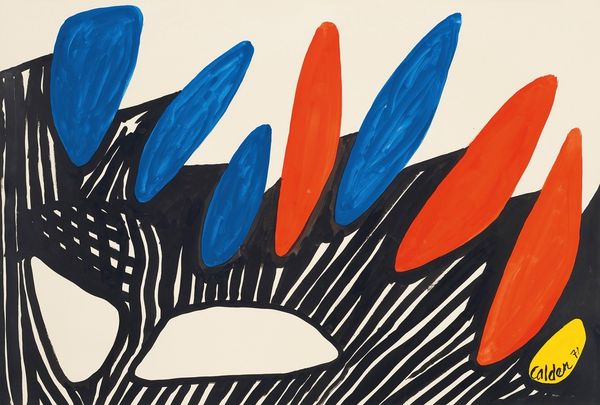
painting, acrylic-paint
#
painting
#
pop art
#
acrylic-paint
#
abstract
#
form
#
acrylic on canvas
#
geometric
#
line
#
modernism
Copyright: Modern Artists: Artvee
Curator: Standing before us is Alexander Calder’s "La Bouche," executed in 1961 using acrylic paint on canvas. Its stark simplicity immediately strikes me. Editor: Yes, it's strikingly direct. The harsh contrast of the black lines against the red and white makes me feel almost assaulted visually. There is an immediacy that practically spits in your face. What are we to make of it, considering the period in which it emerged? Curator: Given its creation in the early 1960s, it’s vital to see this painting in conversation with the socio-political shifts of the time. The rise of abstract expressionism challenged conventional norms, and Calder, though primarily a sculptor, engages with that revolutionary spirit here. There is an anxiety here reflecting what I view as cultural chaos during this period. Editor: I can certainly appreciate the tension in its bold abstraction, but my eyes are also drawn to those powerful linear shapes, jutting outwards as spokes. This recalls imagery of disruption and movement, reminiscent perhaps of early avant-garde industrial design or maybe something primal, a weapon of some kind, reflecting societal anxieties, even violence. Curator: Absolutely, these lines, aggressive and unforgiving, resist easy interpretation. Yet that resistance becomes, for me, an invocation of the decade's upheavals – the looming threat of nuclear war, the fight for civil rights, burgeoning feminism. Calder uses abstraction to capture an era wrestling with its identity and direction. Editor: I like the way the harsh angles against that simple, vibrant color suggests power struggles within a social space. In many cultures, angular symbolism communicates messages around force, even struggle. The limited color palette and the scale certainly intensifies that dynamic and lends to those suggestions of a complex identity struggle. It all conveys emotional urgency, doesn't it? Curator: Indeed, I see the painting as an entry point to discussing intersectionality, the multifaceted elements of race, gender, and class that coalesce to construct identity. Editor: "La Bouche" leaves you contemplating on how the most elementary symbolic forms capture deeper social resonances. Curator: A crucial point—and this is what makes the work so deeply important: it demands a constant conversation, challenging the social space the canvas occupies and to reveal shared stories that continue to define us.
Comments
No comments
Be the first to comment and join the conversation on the ultimate creative platform.
